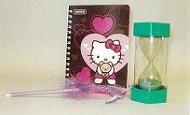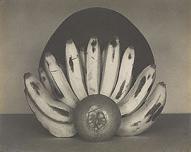Grades/Level: Upper Elementary (3–5) |
|
|||||||||||||||||||||||||||||||||||||||||||||||||||||
Lesson Overview |
|
|||||||||||||||||||||||||||||||||||||||||||||||||||||
Students will plan and design a still life composition. When composing the still life, students will choose objects that emphasize a variety of shapes and textures, and arrange the objects to reflect balance. Next students will create a photographic still life and use it as inspiration to write a poem. Then students will present the still life photograph and poem to the class. |
||||||||||||||||||||||||||||||||||||||||||||||||||||||
Learning Objectives |
||||||||||||||||||||||||||||||||||||||||||||||||||||||
Students will be able to:
|
||||||||||||||||||||||||||||||||||||||||||||||||||||||
Materials |
||||||||||||||||||||||||||||||||||||||||||||||||||||||
• Reproduction of Bowl with Sugar Cubes by Andre Kertesz |
||||||||||||||||||||||||||||||||||||||||||||||||||||||
|
||||||||||||||||||||||||||||||||||||||||||||||||||||||
Lesson Steps |
||||||||||||||||||||||||||||||||||||||||||||||||||||||
Part 1: Exploring Still Life Photography
4. Chart students' responses. 5. After the discussion, assign homework to the class. Tell students they will be creating their own photographic still life. Ask students to bring to class objects from daily life that they want to include in their own still life. Tell them to find objects at home with shapes and textures that they find interesting. Part 2: Composing a Still Life Photograph 1. Ask students to display the objects they brought from home on their desks. Then conduct a gallery walk in class. 2. After everyone has a chance to see each object, review the focus elements, shape and texture. Have students share with a classmate their objects with interesting textures and shapes. 6. Refer to the student handout "Principles of Design" in the Understanding Formal Analysis section of the Getty website to introduce the principle of balance. You may wish to distribute the handout to the class. 3. Display the reproduction of Bowl with Sugar Cubes by Andre Kertesz or Still Life with Bananas and Oranges by Edward Weston. (You may decide to use the same photograph from Part 1, introduce a new photograph, or use more than one.) Begin a class discussion by asking students to share what they see in the photograph. Tell students that artists often organize objects in a still life to create visual balance. Explain that balance is the distribution of the visual weight of objects, colors, texture, and space. If the design is a scale, these elements should be balanced to make a design feel stable. In symmetrical balance, the elements used on one side of the design are similar to those on the other side. In asymmetrical balance, the sides are different but still look balanced. In radial balance, the elements are arranged around a central point and may be similar. You may wish to place a ruler on a reproduction of the work of art and point out where an artist has created balance on either side of the ruler. For example, in Still Life with Bananas and Oranges, you could place the ruler vertically in the middle of the composition and demonstrate symmetrical balance. 4. After the discussion, set up the table, backdrop, and lamp or flashlight. Give students time to compose or arrange their objects on the table so that they reflect a concern for balance. Students will take turns throughout the day composing their objects and experimenting with lighting (above the still life or beside the still life). Students may sketch the still life in order to remember their composition later. 5. Finally, have students photograph their objects to create their own still life. Part 3: Poetry Inspired by Photography 1. Print the students' photographs and give each student a copy of his or her still life, as well as pencils and paper. 2. Tell students to title their still life photograph and write ten sentences about their work of art. Students should be as descriptive as possible. After students have completed their sentences, encourage them to go back and add more details, especially sensory details. 3. Once students have finalized the sentences, model how to select poetic phrases from their sentences. Students will reread each sentence and circle any phrase that strikes them, looking especially for descriptive words. After phrases have been circled, model how to write the circled phrases into stanza form to create a poem. Give students ample time to independently work on their poetry. 4. Demonstrate a poetry reading for the class with clear diction, pitch, tempo, and tone. For homework or in class, encourage students to practice reading their poem to prepare for class presentations. 5. Have each student present their poem and still life photographs to the class. |
|
|||||||||||||||||||||||||||||||||||||||||||||||||||||
Assessment |
||||||||||||||||||||||||||||||||||||||||||||||||||||||
Students will be assessed on:
|
||||||||||||||||||||||||||||||||||||||||||||||||||||||
Standards Addressed |
||||||||||||||||||||||||||||||||||||||||||||||||||||||
Visual Arts Content Standards for California State Public Schools |
|
|||||||||||||||||||||||||||||||||||||||||||||||||||||





